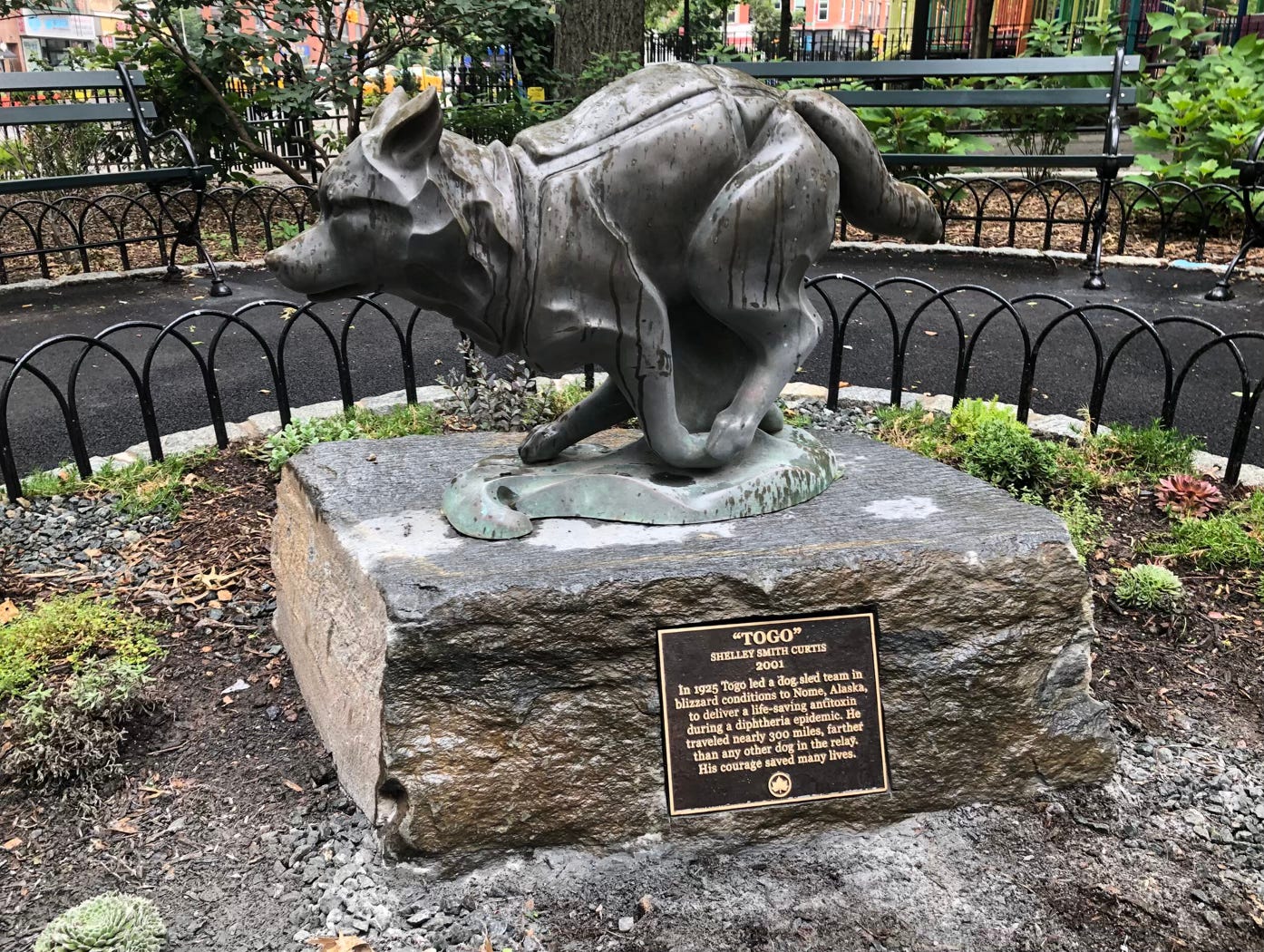A new book by Australian author and historian Jeff Hatwell brings to life the true story of Togo, perhaps the most famous sled dog in the world, who has been mythologized in books, poems, stories, songs, cartoons, movies—and even in art and sculptures—for over a century. Togo of Alaska: The Life and Times of the Greatest Sled Dog is an in-depth and thoroughly researched biography of Leonhard Seppala’s great lead dog; his name still captures the imagination of anyone with an interest in the North, or great dogs, or history, or just a compelling story.
Jeff Hatwell’s clear and beautifully written book begins with a short history of the place and time into which Togo was born: Nome, Alaska, at the turn of the century, when gold was discovered and thousands of people were busily seeking their share of the riches. A young Norwegian lad was part of the influx, and he quickly learned the value of working with good sled dogs, a skill which would serve him well during his lifetime.

Hatwell details the great sled dog races of Nome and the surrounding areas, the All Alaska Sweepstakes, the Solomon Derby, the Burden races—and the importing of dogs who could meet the demands of these increasingly popular events. Driver Leonhard Seppala soon grew to appreciate the qualities of the “sturdy little Siberians,” as the Nome Nugget referred to the imports from across the Bering Strait, and with the third chapter of his book Hatwell begins to describe the life of Togo, from his inauspicious beginnings as perhaps the ‘runt’ of a litter, to his later fame as a heroic sled dog.
An excerpt from the book:
Togo was sais to have been the only puppy born in his litter — or perhaps he was the only one who survived, or (by another account) it was just a normal litter of which he was the “runt.” His birth year could be as early as 1913 (October is sometimes specified as the month), but it could be as late at 1916, as one authoritative source states. No formal kennel records were being kept at the time so there is nothing ‘official’ that could answer the question. This book takes the approach that Togo was born in early 1915, probably March or April, when Leonhard Seappala was winning the All-Alaska Sweepstakes for the first time. Togo was a pup from Dolly, Victor Anderson’s prolific Siberian bitch in the Pioneer kennels. His sire is generally considered to have been Suggen, Seppala’s outstanding part-Malamute lead dog, but the Thomases, based on letters from Victor Anderson, believe the sire was Sepp, litter-brother of Suggen and also a distinguished member of freight and race teams. Either way, Suggen and Sepp were both offspring of the (Siberian) Liska and both part Malamute, which would make Togo and his siblings all having some admixture of Malamute.
Togo of Alaska: The Life and Times of the Greatest Sled Dog, by Jeff Hatwell. 352 pages, 6” x 9,” Publication date June 20, 2025. ISBN-10: 0646712438. ISBN-13: 978-0646712437. Available from Amazon in both print and Kindle format.







I found a very interesting book, which I'd heard of for years but never read, titled "Togo's Fireside Reflections," by Eliizabeth M. Ricker, published in 1928. You can read it in full at HathiTrust:
https://babel.hathitrust.org/cgi/pt?id=hvd.hn25kf&seq=5
Sounds like an interesting book! Several years ago I adopted a piebald siberian from Colorado that's lineage traced back 25 generations to Togo by a very respected Siberian sled dog racer and breeder living in Canada...